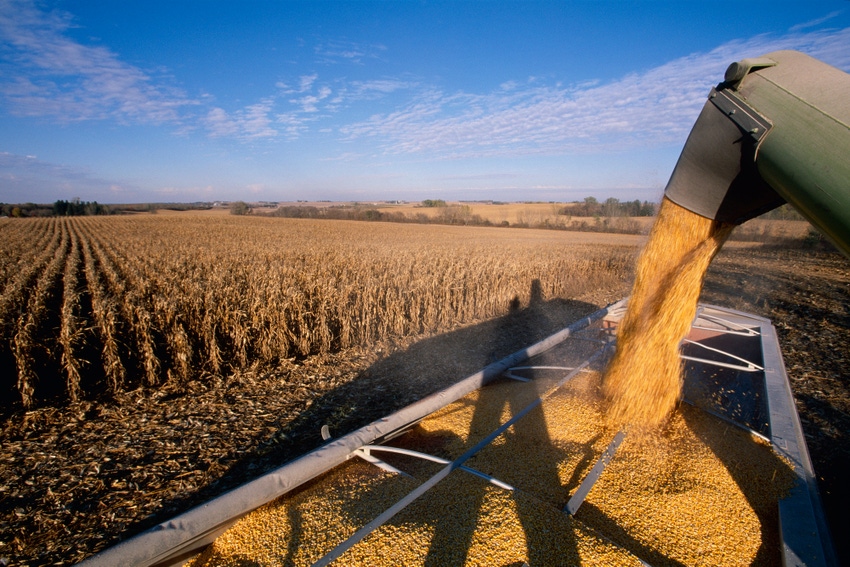
Harvest is quickly approaching with many combines already running in the Southern Corn belt. We are likely three weeks away from harvest on our farm in Northwest Iowa.
It has been interesting to see how grain buyers are maintaining historically firm basis levels this close to harvest. Some ethanol plants have reportedly offered $1.05 positive basis, giving farmers close to $8 for their corn delivered within September. They will also take that corn with up to 22% moisture with no discounts. We expect basis to soften come October. It seems like end users are clamoring to get what they can as soon as they can, because they are unsure of the supply that will be left.
While farming had many challenges this year, we should find solace in the fact that corn prices are still hovering near their all-time pre-harvest highs. This week saw December corn reach $6.98 ½. The last time the board was at that level leading up to harvest was in 2012. October 1st of 2012 saw corn prices reach $7.76.
Supply strains
Today’s cash offers likely averages out to that same price or potentially higher. This continues to demonstrate how the Western Corn Belt is poised to experience a supply strain. While ending stocks are nearing pipeline supplies, they are not equally distributed across the Midwest.
The Eastern Corn belt has outperformed the Western Corn belt the last couple of years. Kansas will need to bring in corn from Nebraska. Nebraska will need to bring in supply from South Dakota or Western Iowa. Western Iowa will need to bring in corn from Eastern Iowa and so on and so forth.
Will they be able to move enough production from the Eastern Corn belt to the Western Corn belt? Basis levels will be very sensitive post-harvest as end-users will be challenged to buffer the supply gap.
Disappointing yields
Early harvest results have been all over the map but in general could be described as “disappointing.” The trade is leaning towards further reduction in U.S. crop size. One well known crop tour may have gotten it right with their 168 bpa yield average.
We only received two inches of rain in August on our farm (at the very end of the month) allowing for a poor finish to the crop. This compares to 6 inches last year. We received another 6.4 inches of rain in September and October last year. While that did little to finish out the crop, it did refill the subsoil moisture that got us along most of this year.
This compares to only 0.3” so far this year and meteorologists tell us we should not expect much more than that.
Sales recommendations
We have recommended light sales of new crop in our market report and we have covered those sales by being long futures. Bears will point out that the macro-economic conditions are going to continue to deteriorate as interest rates continue to rise and demand falls off.
We also have a very persistent U.S. dollar that continues to chug along making new highs. I would not disagree with either of those statements. In fact, in the short-term the corn market could use a “healthy” correction. Notice I used the term “healthy,” meaning 40 to 50 cent move lower. Nobody needs a $1.75 correction like we saw last June. A healthy correction will kick out the weak longs and help bring in a fresh group of new ones.
We will need that if we are going to break back above $7 in December future,s which is proving to be strong resistance.
Bottom line, $8 cash for corn is a profitable price and we wouldn’t want to talk most people out of taking it. We have added $1.10 back to the futures price since bottoming in July.
The question I keep asking myself is if end-users are willing to pay close to $8 for corn today, how about next spring? We won’t know for another 45 days or more how bad the drought damage really was.
Farmers are a lot wiser than they were a couple of years ago, holding on quite a bit tighter to their grain. If things continue as they are, $8 might not be enough to get them to part with it.
Matthew Kruse is President of Commstock Investments. Subscribe to their report at www.commstock.com.
Futures trading involves risk. The risk of loss in trading futures and/or options is substantial and each investor and/or trader must consider whether this is a suitable investment. Past performance is not indicative of future results. Trading advice is based on information taken from trades and statistical services and other sources that CommStock Investments believes to be reliable. We do not guarantee that such information is accurate or complete and it should not be relied upon as such. Trading advice reflects our good faith judgment at a specific time and is subject to change without notice. There is no guarantee that the advice we give will result in profitable trades.
The opinions of the author are not necessarily those of Farm Futures or Farm Progress.
About the Author(s)
You May Also Like






